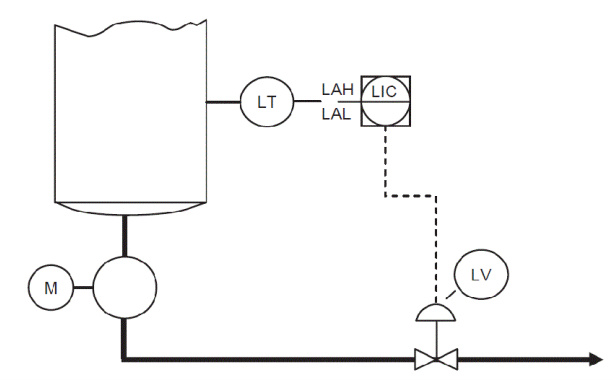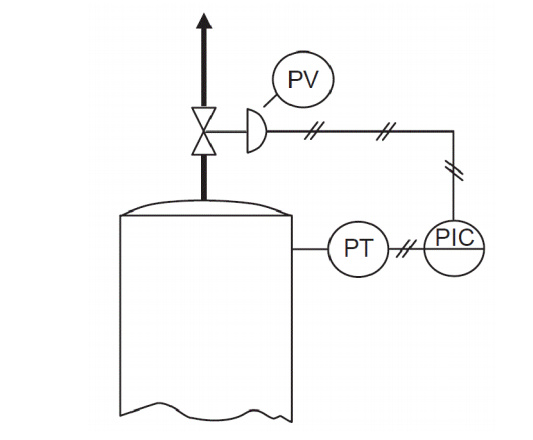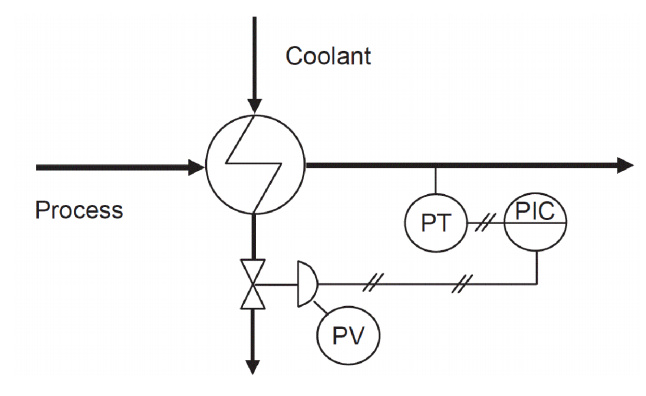The most common control loops encountered in single and double flash power plants include: flow, level (Figure 1), pressure (Figure 2) and condenser with pressure control (Figure 3).
Flow is both a manipulated and a controlled variable, and has the fastest response of all the loops. Flow loops are always self-regulating. Ordinarily, a valve is selected to deliver the desired characteristic of flow.
Liquid level is the integral of the difference between the flows into and out of a vessel. In Figure 1 the level controller (LIC) acts on the outlet valve (LV) to maintain the desired level.

FIGURE 1: Level control ; LT: Level transmitter; LAH: Alarm level high; LAL: Alarm level low; LIC: Level controller and indicator; M: Motor; LV: Level valve
Level is measured as a distance or as a difference in pressure by the transmitter (LT) and the output of the controller is a position command to the valve, the final acting element.
Level is measured as a distance or as a difference in pressure by the transmitter (LT) and the output of the controller is a position command to the valve, the final acting element.

FIGURE 2: Pressure control ; PV: Pressure valve; PIC: Pressure controller and indicator; PT: Pressure transmitter

FIGURE 3: Condenser pressure control on coolant flow PV: Pressure valve; PT: Pressure transmitter; PIC: Pressure controller and indicator
Pressure has two different behaviours in geothermal: a liquid-pressure loop behaves linearly and has a fast response; a vapour-pressure loop is lag-dominant (like liquid-level) but is self-regulating as rising pressure tends to both increase outflow and decrease inflow.
In Figure 2 the pressure controller (PIC) acts on the outlet valve (PV) to control pressure. If the fluid is leaving the process, the valve is called a pressure relief valve. Pressure is measured directly by the transmitter (PT) and the output is a position command to the output valve (PV).
In Figure 3, the pressure controller (PIC) acts on the outlet valve (PV) to control the flow of the coolant. This method is used to control the vacuum pressure in the condenser. Vacuum pressure is measured directly by the transmitter (PT) and the output is a position command to the output valve (PV).